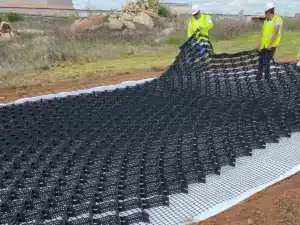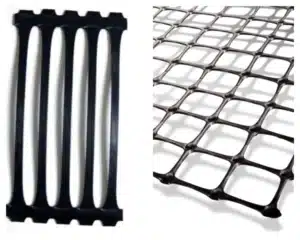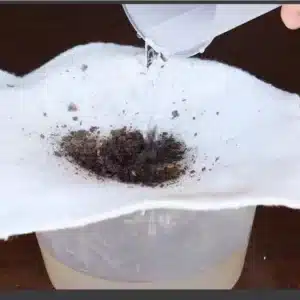Rain swells soils. Drains slow down. Sites flood. You want one simple layer that keeps water moving and keeps fines out. Does nonwoven geotextile do that?
Nonwoven geotextile is a needle-punched filter fabric that lets water through while holding soil in place. It delivers filtration, separation, and protection in drains, trenches, retaining walls, roads, sports fields, and green roofs with consistent, testable performance.
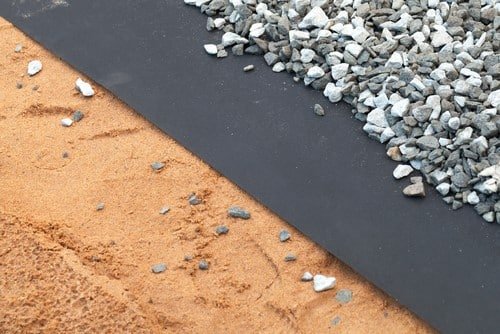
You may hear many product names on site. Some sound the same. I will keep this guide plain and practical. I will show what the fabric is, how it works, how to size it, how to install it, and how to avoid common mistakes.
What are Non woven geotextile?
Drainage fails when fines migrate. Stone clogs. Pipes fill. A filter layer fixes that risk fast.
Nonwoven geotextile is a porous, needle-punched fabric made from polypropylene or polyester fibers. It acts as a filter and a separator. Water passes; soil stays put.
Dive deeper
We use “nonwoven” to mean a fabric built without weaving. Manufacturers card polymer fibers into a fluffy web, then needle-punch the web to entangle fibers in three dimensions. Heat setting often follows to lock thickness and control pore structure. The result is a fabric that has high water flow across its thickness (we call this permittivity) and a controlled opening size (often called AOS or O95). Those two values define how well it filters water and stops fines. Typical base polymers are polypropylene (PP) and polyester (PET). PP handles most soils, salts, and buried conditions well. PET works at higher temperatures and shows low creep under long loads. Both can be UV stabilized for short exposure during installation. We select mass per unit area by job: light grades for landscape drains, medium grades for road edge drains, and heavy grades for protection or under riprap. You will also see survivability classes in some specs. These classes tie fabric strength and puncture resistance to site roughness and aggregate size. The key is simple: nonwoven geotextile gives you a stable filter layer that breathes well, resists clogging when chosen correctly, and cushions adjacent products like pipes, geomembranes, or drainage boards.
What is non woven geotextile used for?
You want clear use cases, not vague claims. Drains must stay open. Soil must stay in place.
Nonwoven geotextile wraps perforated pipes, lines trench walls, sits behind retaining walls, protects waterproofing, separates subgrade from base, and supports green roof drainage layers.

Dive deeper
Here is how the fabric earns its keep across jobs. In French drains, we place it around the clean stone and, in many cases, around the pipe as a “sock.” The fabric blocks soil fines from entering the voids while allowing high flow toward the pipe. In retaining and basement walls, it lines the soil side of the drainage layer. That cut reduces hydrostatic pressure and keeps the backdrain media clean for decades. In road and parking edges, nonwoven separates fine subgrade from granular subbase, which prevents pumping and keeps edge drains free. On sports fields and golf courses, it acts as a filter above slit drains or lateral drains, where the sand profile demands high permittivity with a pore size tuned to the rootzone. On podium decks and green roofs, it sits above drainage boards as a filter so growth media cannot wash into the board channels. It also doubles as a protection layer for membranes under rock ballast. Along shorelines and under riprap, heavyweight nonwoven works as a filter and cushion so waves do not pull out fines from the bank. In landfills and tunnels, it protects geomembranes and filters leachate or seepage systems. One fabric family, many roles, one simple idea: keep the voids clean and keep water moving.
Can water pass through non-woven geotextiles?
Yes. That is the point. Water should pass freely. Soil should not.
Nonwoven geotextile is designed for high cross-plane flow (permittivity) while controlling particle passage by its apparent opening size (AOS). You get drainage, not soil loss.
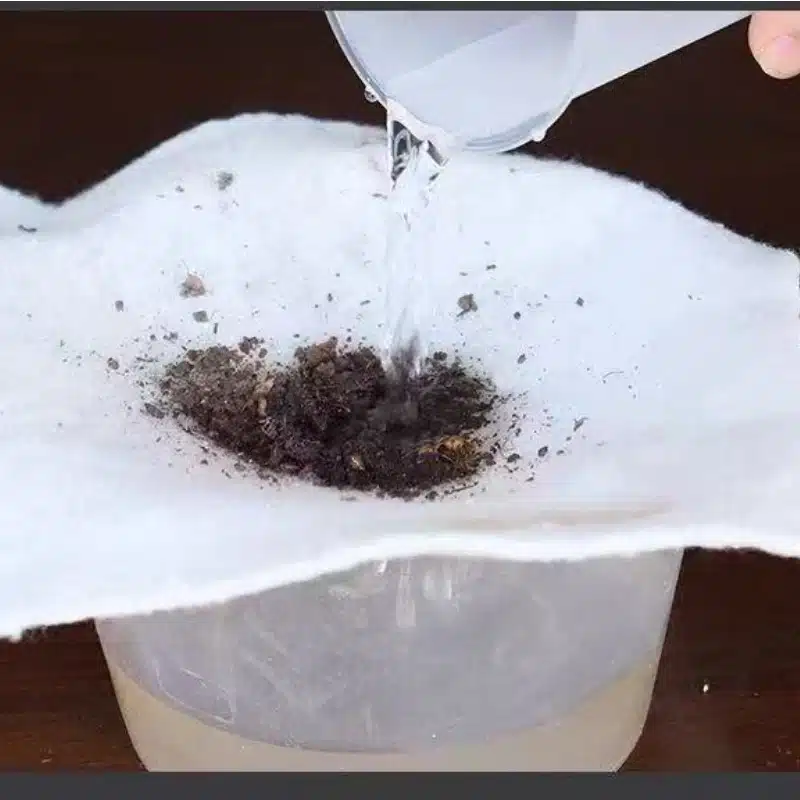
Dive deeper
Let me unpack two test terms you will meet on every data sheet. Permittivity (ASTM D4491 or EN ISO 11058) tells you how much water flows through the fabric thickness under a small head. Units are s⁻¹. Higher numbers mean easier flow. Typical light-medium nonwovens show 0.7–2.0 s⁻¹; heavy protection grades can be lower because they are thicker and denser. AOS, also called O95 (ASTM D4751 or ISO 12956), reports a characteristic pore opening. It links to soil retention. We match AOS to the soil’s D85 (the particle size where 85% is finer). A common rule is AOS ≤ 1.5 × D85 for broadly graded soils, but projects may set tighter limits for uniform sands or gap-graded soils. Good drainage needs both values in balance. If AOS is too tight, flow drops and the fabric may clog at the surface. If AOS is too open, fines wash into the stone and fill voids. Nonwoven’s 3D fiber matrix helps form a thin natural soil “filter cake” that stabilizes quickly while still allowing water to pass. That self-adjusting behavior is why nonwovens outperform many woven filters in variable soils. Final note: flow along the plane (in-plane transmissivity) is not the same as permittivity. Use drainage composites when you need long in-plane flow paths.
How thick is non-woven geotextile?
You see “4 oz, 6 oz, 8 oz, 12 oz” or “120, 200, 270, 400 g/m²” and wonder what that means on site.
Thickness varies with mass and needle-punching. Typical ranges are 0.8–5.0 mm. We select weight and thickness by function, soil, and construction roughness.
Dive deeper
Mass per unit area is the most common grade marker. In North America, many teams speak in ounces per square yard; in international tenders, grams per square meter is standard. Thickness at 2 kPa pressure appears on data sheets but shifts with test pressure, so use it as a relative, not absolute, number. Here is a quick, practical map:
| Typical mass | Approx. thickness | Common drainage uses |
|---|---|---|
| 100–150 g/m² (3–4.5 oz) | 0.8–1.5 mm | Light landscape drains, pipe wrap in clean sands |
| 200–270 g/m² (6–8 oz) | 1.4–2.5 mm | French drains, retaining walls, sports fields, edge drains |
| 300–400 g/m² (9–12 oz) | 2.0–3.5 mm | Heavy backdrains, shoreline filters under finer armor, membrane protection |
| 450–600 g/m² (13–18 oz) | 3.0–5.0 mm | High-risk sites, coarse aggregates, riprap filters, cushion layers |
Heavier is not always better for drainage. Heavier fabrics add puncture resistance and survivability in harsh installs, but they can reduce permittivity. Match the grade to soil and construction. If the trench will see angular ballast dumped from height, choose a higher CBR puncture grade. If the soil is uniform fine sand and flow demand is high, keep a higher permittivity grade with a tight AOS. Always read mass together with permittivity, AOS, grab strength, and CBR puncture.
How to use non woven geotextile for drainage ?
Right fabric, wrong install still fails. The sequence matters.
Prepare the trench, place bedding, roll and align fabric, manage overlaps, place aggregate gently, wrap and close, then backfill and compact in lifts.
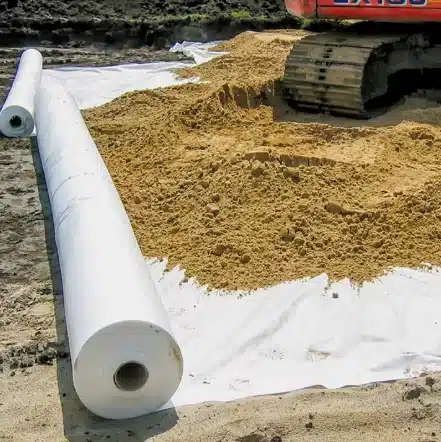
Dive deeper
I keep the field steps simple. First, trench prep: remove protruding roots and sharp debris. Proof-roll or probe the base. If the subgrade is very wet, let it drain or firm up with a thin working layer. Second, bedding: place 50–100 mm of clean, angular stone to protect the fabric and create a level base. Third, fabric layout: unroll with the long direction along the trench. Keep the fabric flat without wrinkles. Overlap edges a minimum of 300 mm for calm soils, 450–600 mm for soft clays or where crews will walk on the overlap. In critical work, sew seams or use approved stapling patterns. Fourth, aggregate placement: place stone in thin lifts. Drop height should be low to avoid puncture. Do not drive equipment directly on exposed fabric. Use boards or a small layer of stone to bridge. Fifth, pipe setting: lay the perforated pipe on the bedding with perforations down or as the design shows. Sixth, wrap closure: bring fabric sides over the stone and pipe and close the “burrito.” Maintain overlap along the trench crown and fix with ties or staples at intervals so it does not open during backfill. Seventh, backfill and compaction: place native backfill or specified fill in layers and compact to the project spec. Tie ends of rolls with at least 1 m overlap in the flow direction. Before covering, photograph overlaps, pipe position, and closure for records. Small habits prevent big problems: low drop heights, correct overlaps, and clean stone keep drains free-flowing.
How long does non-woven geotextile last?
You plan for decades, not seasons. You need buried service life that matches the asset.
Buried nonwoven geotextile made from stabilized PP or PET has a long service life. Proper UV protection during install and correct soil compatibility help it perform for decades.
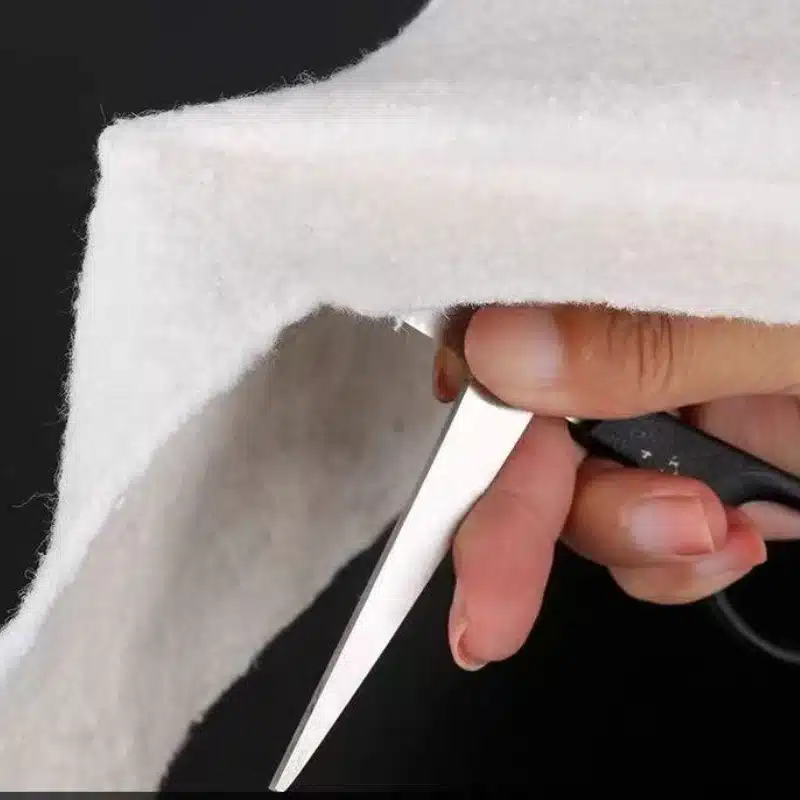
Dive deeper
Longevity depends on three things: polymer stability, environment, and loading. Polymer first. Good PP and PET grades include antioxidants to slow oxidation during processing and service. Short exposures to sunlight during installation are fine when the fabric includes UV stabilizers. Do not leave fabric exposed for weeks; cover it the same day when possible. Environment next. Buried filters see moisture, dissolved salts, and bacteria. PP resists most chemicals in soils and stormwater. PET handles higher temperatures better but can hydrolyze in very high pH environments over long periods; most drainage soils are not that aggressive. Loading last. The fabric carries little long-term stress in most drains. It sees contact with stone and occasional point loads during backfill. That is why we check CBR puncture and grab strength. If a fabric matches soil retention (AOS) and keeps permittivity high, it will stabilize a thin filter cake that stays permeable. Field experience shows decades of performance in drains, walls, and road edges when fabrics are chosen and installed correctly. Document roll IDs and keep data sheets with the as-built set. If the owner ever inspects or repairs a line, that record proves what was installed and why it should still serve.
How to choose the right nonwoven for drainage?
Soils differ. Flow demands differ. Bids vary. A quick rule set helps you pick with confidence.
Match AOS to soil D85, target higher permittivity for high inflow, pick CBR puncture by aggregate and handling risk, and set overlaps or seams by subgrade condition.
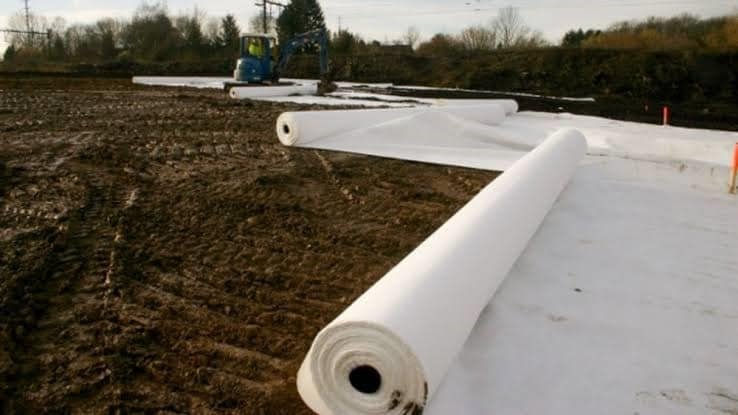
Dive deeper
Start with soil. If you have a sieve analysis, note D85. Choose AOS O95 that is equal to or slightly smaller than D85 times a project factor. If you do not have a sieve, classify the soil by feel and local records: clayey soils need tighter AOS; well-graded sands can accept a slightly larger opening. Next, look at flow. French drains in clay catch slow inflows; permittivity of 0.7–1.0 s⁻¹ often works. Sports fields and clean sands need higher numbers, often ≥1.5 s⁻¹, to keep response quick after rain. Now survivability. If you will drop 25 mm angular stone from a height or track a small loader over first lifts, set a higher CBR puncture and grab strength. That choice often moves you from 200–270 g/m² to 300–400 g/m². For very harsh work, go heavier. Plan details. Overlap lengths increase with softer subgrade and higher hydraulic gradients. Sewn seams give strong joins when trench widths are tight and you want minimal overlap waste. Finally, confirm packaging and labeling. Ask for roll IDs, lot traceability, and a certificate of analysis listing AOS, permittivity, mass, grab strength, and CBR puncture. Clear PO lines cut change orders. A simple checklist on your tender saves time: soil class, target AOS, minimum permittivity, survivability class, seam/overlap method, roll width/length.
Common mistakes and how to avoid them
Many drainage problems come from the same simple errors. Fix them once and you save rework.
Do not skip overlaps, drop stone from height, choose AOS blindly, or leave fabric exposed for weeks. Keep stone clean. Photograph overlaps before cover.
Dive deeper
I see four repeat issues. First, wrong AOS. Teams often pick the tightest fabric “to be safe.” Too tight reduces flow and forms a blind skin that behaves like plastic wrap. Match AOS to soil. If data is missing, test a small section and observe early flow. Second, rough placement. When crews dump stone from a high bucket, angular particles punch fabric and start tears. Keep drop height low, lay a thin cushion, and use boards or sand chutes if access is tight. Third, poor seam practice. A 50–100 mm overlap looks fine to the eye but opens under placement. Use 300–600 mm overlaps or sew/fasten seams per spec. Align rolls with the flow direction where possible. Fourth, exposure and contamination. Sun and wind can degrade or blow fabric into wrinkles if left open. Cover the same day. Keep mud off the fabric; mud reduces initial flow and adds fines to the drain. Two more quick habits help. Mark overlap lines with spray paint so crews can check quickly. Keep a roll layout sketch in the foreman’s pocket and shoot photos at each stage. These small steps cost minutes and save days.
My opinion
Choose by soil and survivability first. Keep the spec short and testable. Train the crew for one morning and set a photo checklist. The drains will work, the records will hold, and the project will move.
FAQ
What weight nonwoven should I use for a French drain in clay?
Start at 200–270 g/m² with tight AOS and permittivity around 0.7–1.0 s⁻¹. Increase overlap to 450–600 mm in soft trenches.
Should I wrap only the pipe or the whole trench?
Wrapping the entire stone envelope performs better. It protects voids throughout the section, not just at the pipe.
Does a tighter AOS always reduce clogging?
No. Too tight can blind the surface. Match AOS to soil D85. Let a thin, stable filter cake form.
What permittivity is good for clean sand drains?
Aim for ≥1.5 s⁻¹ so the layer does not throttle inflow during peak rainfall.
Is heavier fabric always better?
Heavier boosts puncture resistance but can lower flow. Select the lightest grade that survives your install.
PP or PET for drainage?
PP suits most buried drainage jobs. Choose PET for higher temperatures or when long-term creep limits are strict.
How much overlap do I need?
300 mm minimum in firm trenches. Use 450–600 mm in soft clays or when crews walk on overlaps. Sew when space is tight.
Can nonwoven geotextile clog from biofilm or iron ochre?
Yes, in some groundwater. Use clean stone, design access for maintenance, and consider flushing plans where risk is known.
How long can fabric stay exposed to sun?
Keep it short—ideally same-day cover. If weather delays, use UV-stabilized grades and weigh down edges to stop wind damage.
What roll width should I order?
Pick widths that minimize seams in your trench. Many jobs use 3.0–4.5 m rolls; narrow trenches may use 1–2 m rolls.
Can I place stone directly on fabric with a loader?
Place a thin protective lift first and keep bucket height low. Do not turn tires on bare fabric.
Do I need a drainage composite instead?
Use a composite where you need high in-plane flow, like vertical walls with long flow paths. Pair it with nonwoven as the filter.
What simple field checks prove quality?
Record roll IDs, measure overlaps, take photos of closure, and keep the COA showing AOS, permittivity, mass, and puncture.
Conclusion
Match AOS to soil, keep permittivity high, protect the fabric during install, and document the work. Your drains will stay open, and your maintenance team will thank you.
MJY Geosynthetics Manufacturer has been dedicated to producing high-quality geosynthetic materials for 15 years and is a recognized leader in the industry. If you are interested in finding a reliable one-stop geosynthetics supplier for your project or business, please visit our website for more information:

